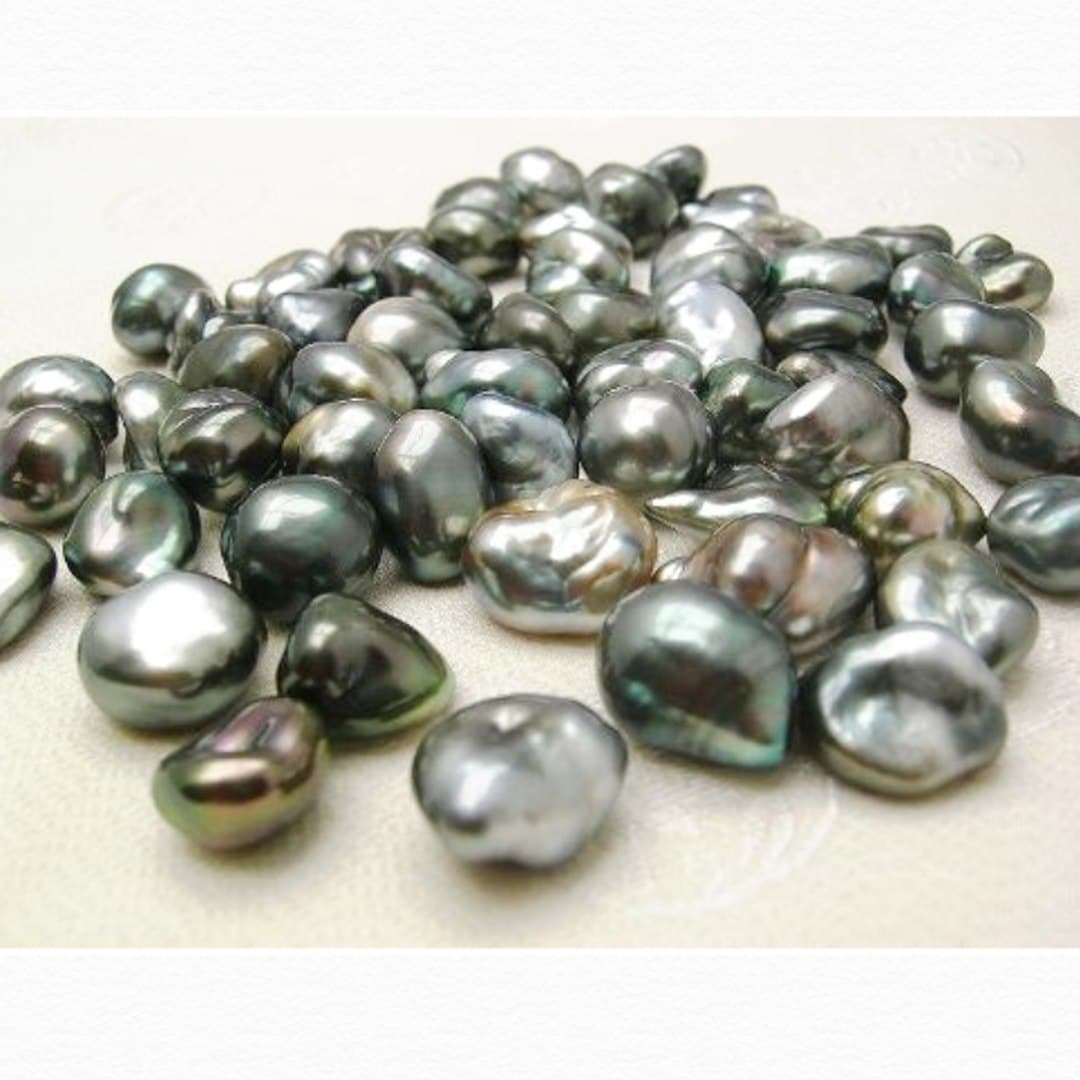KASHI'S PEARL

Keshi pearls are often refer to as "grain pearls"; they are a "by-product" of the culturing process. Around the implant placed in the oyster, a so-called pearl sac formed. But, there are cases when the oyster rejects the implanted nucleus, leaving the pearl sac empty. Since the shell is in its natural environment, foreign particles inevitably get inside, around which the nacre builds up and a new pearl is forming.
Keshi pearls stand as if in the middle between natural pearls and cultured pearls. The foreign body went into the oyster without human involvement, but the oyster itself is in the pearl farm, under human supervision.
These little pearls of various shapes come in almost all hues and are very expensive.
These days, it is getting harder and harder to find Keshi pearls, as Keshi Pearls are not allowed to develop simultaneously with the ordinary cultured pearls. This is because the amount of nacre released by a single oyster is limited. Since farmers x-ray each oyster to see if it has a nucleus or not, they have the opportunity to reintroduce the nucleus into the oyster, preventing Keshi from developing. Keshi pearls can be completely different colors-it all depends on which shell they grow in. Speaking of cost, Keshi pearls are not cheap, because they are essentially natural pearls. Besides, the price will vary not only depending on its weight, also in its color as well. Thus, the most expensive Keshi pearls are of gold color, and the most "affordable" in price are Keshi pearls of dark colors.
We do not have any jewelry with these pearls, but we are still at the beginning).
No posts found
Write a review